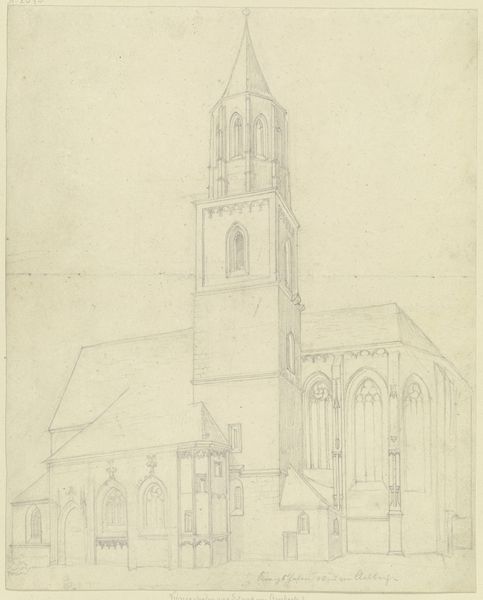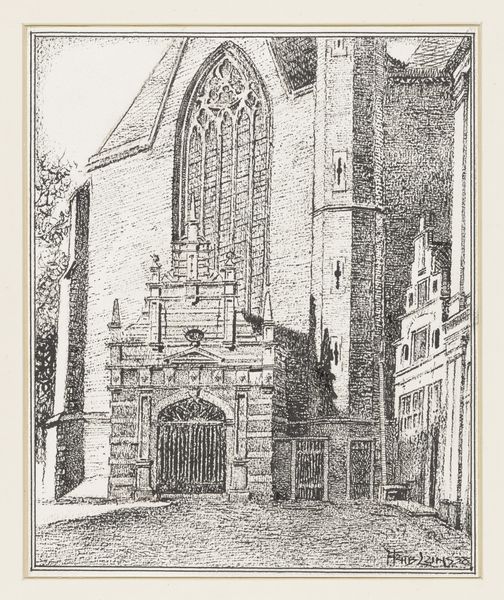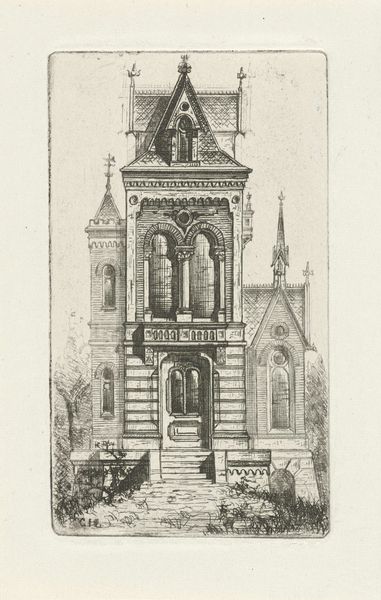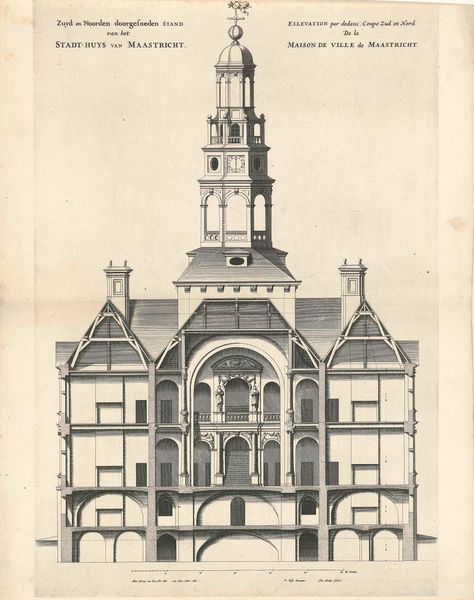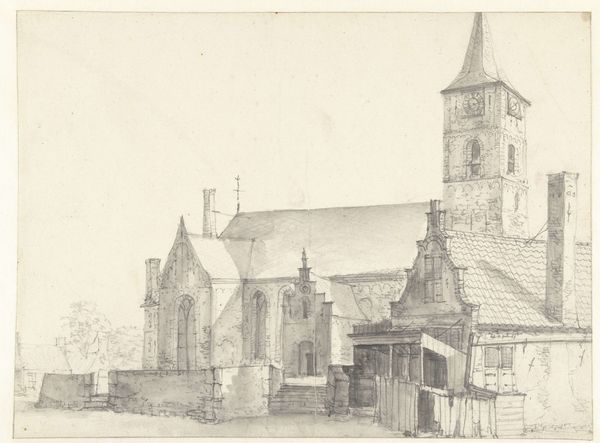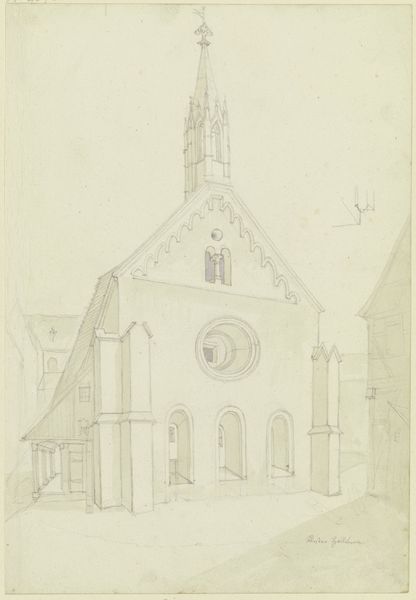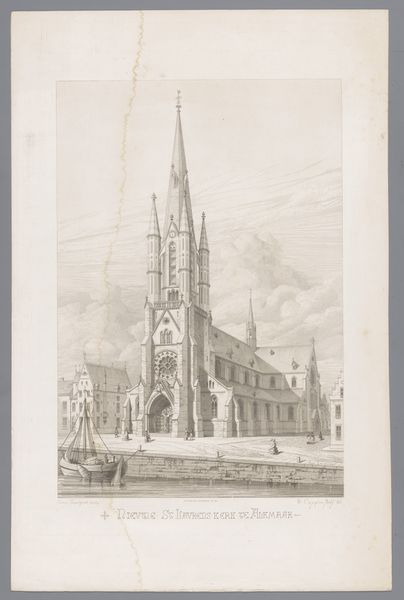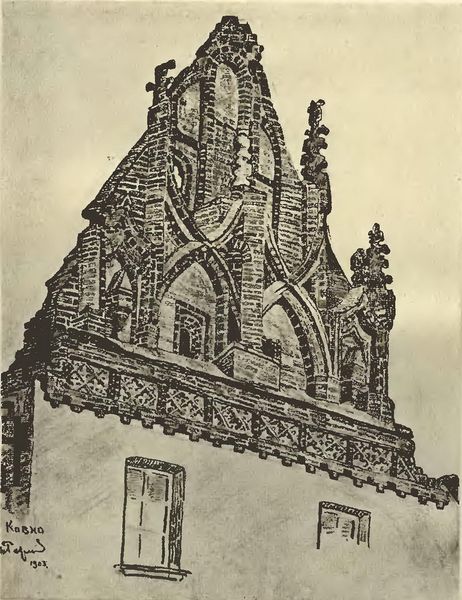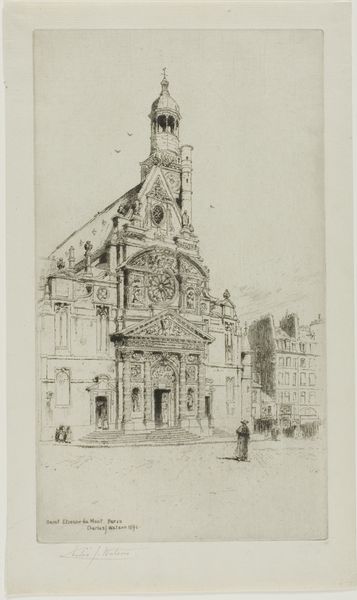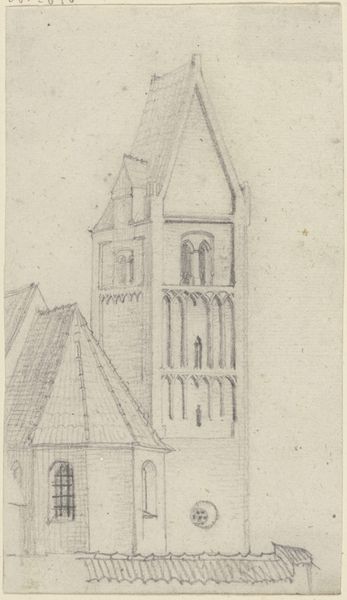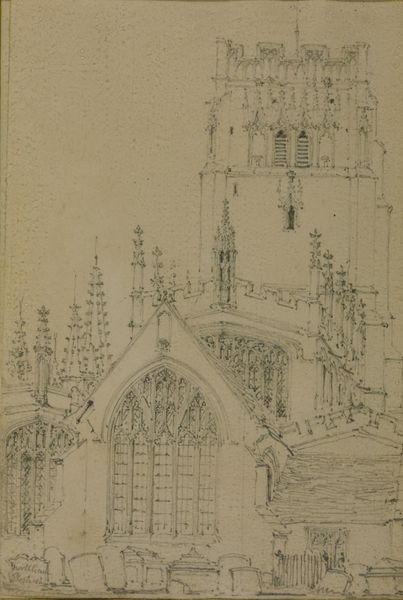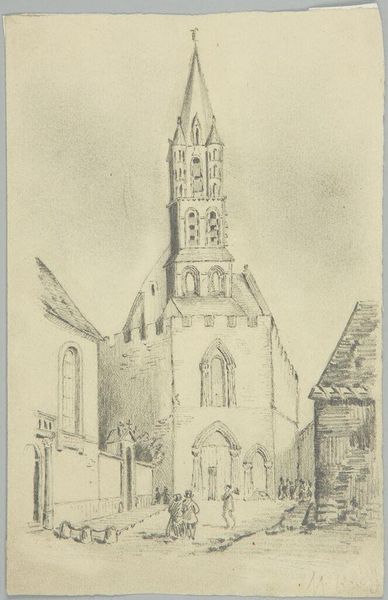
drawing, paper, ink, architecture
#
drawing
#
landscape
#
paper
#
ink
#
geometric
#
architecture
#
realism
Dimensions: image: 7.7 × 5 cm (3 1/16 × 1 15/16 in.) sheet: 16.5 × 14.3 cm (6 1/2 × 5 5/8 in.)
Copyright: National Gallery of Art: CC0 1.0
Editor: This drawing, "The Clock Tower, Trébrivan" by John Taylor Arms from 1950, is rendered in ink on paper. The precision is remarkable! It almost feels like a photograph but for the subtle variations in line weight. What draws your attention most in this piece? Curator: Immediately, I'm struck by the labor embedded in this work. Think about the time spent meticulously rendering each stone, each shadow, the elaborate tracery of the tower. What does this intensive, almost devotional, approach to the subject matter tell us about the artist’s relationship to the built environment, the raw material itself, of Trébrivan, and the economic and social structures that both enabled the church construction and now its documentation? Editor: That’s a great point, the labor intensity is palpable. Does the choice of materials, ink on paper rather than, say, an oil painting, suggest a certain kind of accessibility or democratization of art, focusing on a less rarefied approach to image-making? Curator: Absolutely. Ink and paper are relatively inexpensive and readily available, opening up artistic practice to a wider range of individuals and potentially bypassing the patronage systems associated with more expensive media. But how does the printmaking process itself, with its potential for reproduction and distribution, affect our understanding of the original artwork and its social impact? Is it truly democratic? Editor: I hadn’t considered the implications of it being a print. That changes things, adding a layer of mechanical production on top of the artist's hand. Curator: Exactly. The reproductive quality alters our perception of value and aura that traditional art history might emphasize. By considering the materials and means of production, we begin to see this image less as a purely aesthetic object and more as a product of a specific historical moment with tangible social implications, what do you think about the contrast of gothic architecture with mass production. Editor: Thinking about the interplay between the subject, this medieval architecture, and the materials with its suggestion of industrial modes, has totally reframed my understanding. Curator: For me, that's the beauty of a materialist perspective, it reveals the intricate web of connections that shape both the artwork and our understanding of it.
Comments
No comments
Be the first to comment and join the conversation on the ultimate creative platform.
